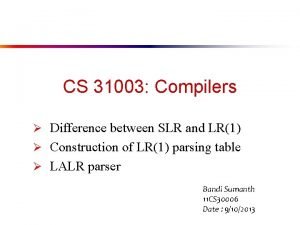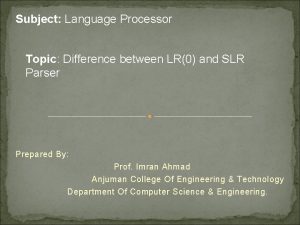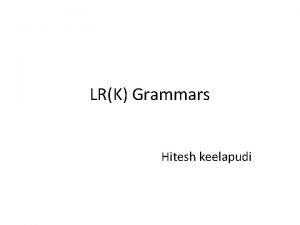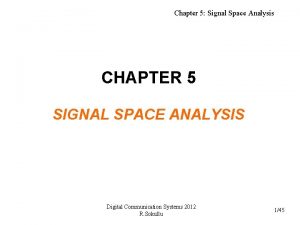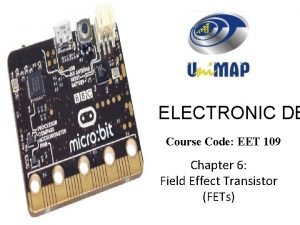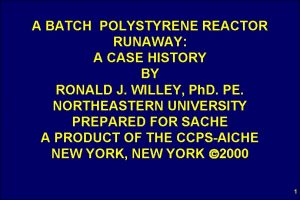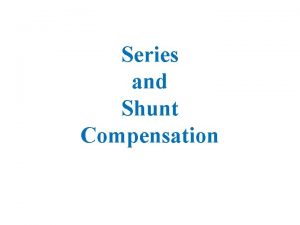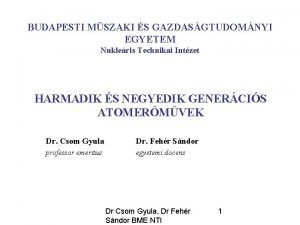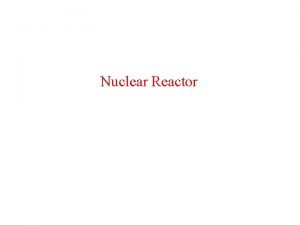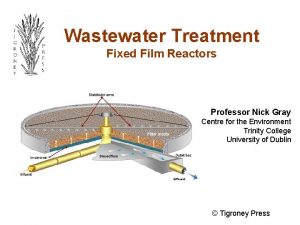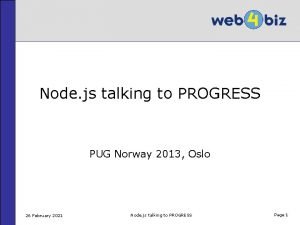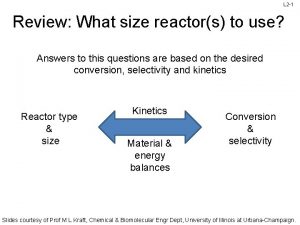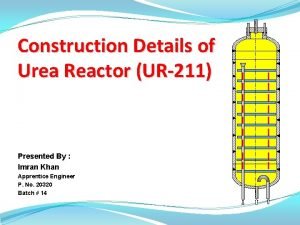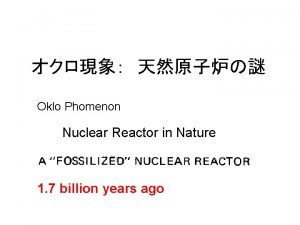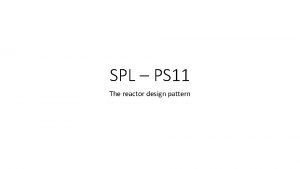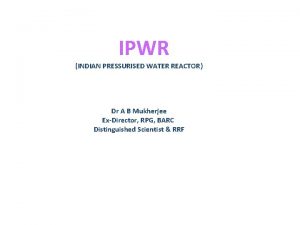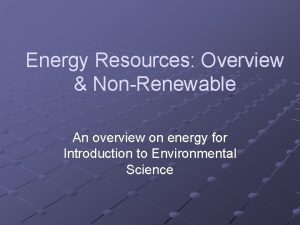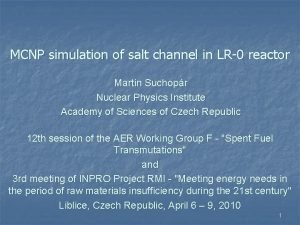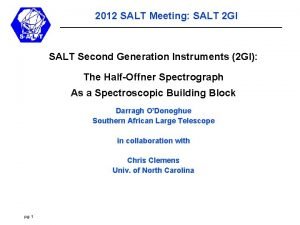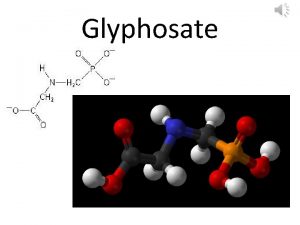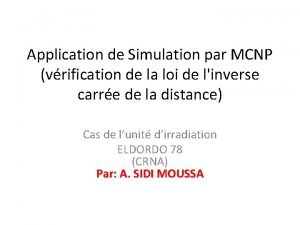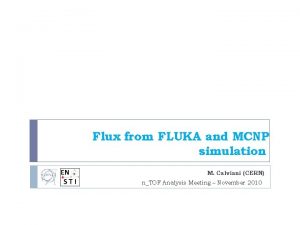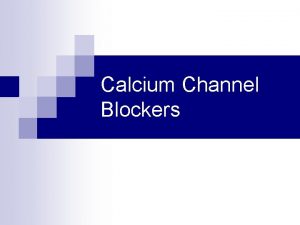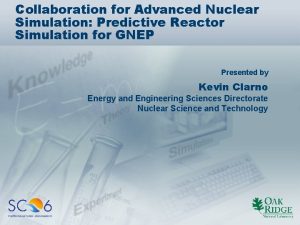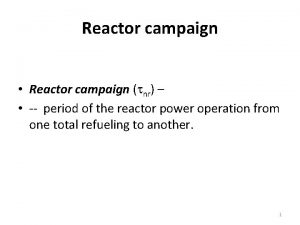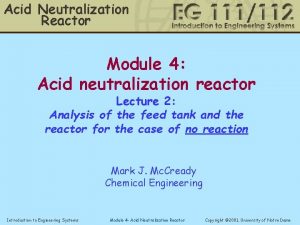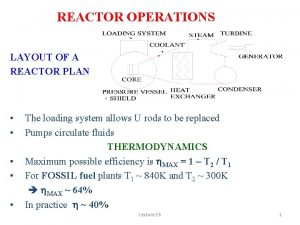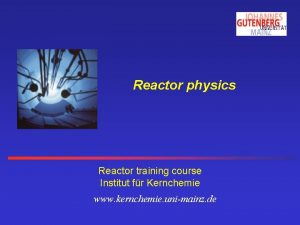MCNP simulation of salt channel in LR0 reactor



















- Slides: 19

MCNP simulation of salt channel in LR-0 reactor Martin Suchopár Nuclear Physics Institute Academy of Sciences of Czech Republic 12 th session of the AER Working Group F - "Spent Fuel Transmutations" and 3 rd meeting of INPRO Project RMI - "Meeting energy needs in the period of raw materials insufficiency during the 21 st century" Liblice, Czech Republic, April 6 – 9, 2010 1

AHTR and MSBR n n n Demands on molten salts concerning their composition and properties differ in the way of their application MSBR (Molten Salt Breeder Reactor) uses in the primary circuit molten salts containing fissile and fertile material, which serve as fuel and coolant at the same time AHTR (Advanced High-Temperature Reactor) uses graphitematrix high-temperature fuel like in helium-cooled reactors, but provides cooling with high-temperature fluoride salt (~900 °C) without fissionable material 2

Project SPHINX n n n SPHINX = SPent Hot fuel Incinerator by Neutron flu. X Demonstration nuclear transmutor with liquid fuel based on molten fluoride salts Incineration of transuranic elements and long-lived fission products Elementary module designed as subcritical fuel channel surrounded by graphite blocks equipped with tubes in which flow molten fluorides of long-lived radionuclides System can be either critical or subcritical which is kept in stationary state and whos power is driven by an external neutron source or by driving zone surrounding the subcritical assembly 3

Project SPHINX Elementary module of the SPHINX concept 4

Program EROS n n n EROS = Experimental ze. RO power Salt reactor SR-0 Program serves for experimental verification of insertion zones of MSR type demonstration unit in reactor LR-0 Within the frame of the project SPHINX 5 experiments were carried out with modules denoted EROS 1 to EROS 5 inserted into the core of reactor LR-0 Modules differed in number and configuration of various blocks, in amount of salt and graphite contained in the core and in number and enrichment of fuel assemblies Distribution of flux density and neutron spectrum in the driving zone and in salt channels were examined by 3 methods: neutron activation analysis, gama scanning method of fuel rods and thermoluminiscence detectors 5

Simulation of salt channel in MCNPX Simulated arrangement of salt channel surrounded by 6 fuel assemblies 6

MCNPX simulations of the salt channel n n n n Salt channel 600 mm high surrounded with 6 shortened WWER-1000 fuel assemblies enriched with 4. 4 % 235 U Salt channel consists of 7 sections made of aluminum The sections are filled with mixture of Li. F-Na. F salt with the composition 60 -40 molar % and the density of 1. 7 g/cm 3 Li. F salt first with natural composition 92. 5 % 7 Li, 7. 5 % 6 Li, then changed to enriched 7 Li. F salt with 99. 995 % 7 Li 25 experimental channels with diameter of 10 mm Experimental aluminium probes with diameter of 8 mm and 3 positions for activation foils (bottom, middle, top) at height of 150, 300 and 450 mm above the bottom of the salt channel Activation foils made of various activation materials with 7 diameter of 6 mm and 50 µm thin

Simulation of salt channel in MCNPX Salt channel with fuel assemblies – horizontal and vertical section of the arrangement 8

MCNPX simulations of the salt channel n n n The simulations were made in MCNPX version 2. 6 The source neutrons were generated by kcode routine with 4. 109 source particles The cross-sections for kcode were taken from standard libraries for neutrons ENDF/B-VII. 0 and JEFF 3. 1. 1 Maximum energy of neutrons was limited to 20 Me. V (sufficient for reactor spectrum) The energy range 0 – 20 Me. V was divided into: n 6 logarithmic intervals for mesh tallies in salt channel n 50 logarithmic intervals for spectra in activation foils 9

Simulation results mesh tallies salt channel filled with Li. F-Na. F – horizontal section 0 – 0. 5 e. V – 0. 5 ke. V – 100 ke. V – 1 Me. V – 20 Me. V 10

Simulation results mesh tallies salt channel filled with 7 Li. F-Na. F – horizontal section 0 – 0. 5 e. V – 0. 5 ke. V – 100 ke. V – 1 Me. V – 20 Me. V 11

Simulation results mesh tallies salt channel filled with Li. F-Na. F – vertical section 0 – 0. 5 e. V – 0. 5 ke. V – 100 ke. V – 1 Me. V – 20 Me. V 12

Simulation results mesh tallies salt channel filled with 7 Li. F-Na. F – vertical section 0 – 0. 5 e. V – 0. 5 ke. V – 100 ke. V – 1 Me. V – 20 Me. V 13

Simulation results neutron spectra salt channel filled with Li. F-Na. F – activation foils in middle positions of aluminium probes in experimental channels channel 2 channel 4 channel 1 channel 3 14

Simulation results neutron spectra salt channel filled with Li. F-Na. F – activation foils in middle positions of aluminium probes in experimental channels channel 5 channel 7 channel 6 channel 8 15

Aktivační detektory Activation Reaction material 197 Au 115 In 55 Mn 58 Ni 27 Al 63 Cu 98 Mo 186 W 56 Fe 164 Dy 175 Lu 139 La 89 Y 51 V 45 Sc 37 Cl 197 Au(n, γ)198 Au Relative Half-life of Energy of Relative intensity Reaction abundance product T 1/2 main gama of main gama line treshold in natural line Eγ [ke. V] Iγ [%] [Me. V] mixture [%] 100 115 In(n, γ)116 m. In 95, 7 115 In(n, n‘)115 m. In 95, 7 55 Mn(n, γ)56 Mn 100 58 Ni(n, p)58 Co 68, 1 27 Al(n, α)24 Na 100 27 Al(n, p)27 Mg 100 63 Cu(n, γ)64 Cu 69, 2 98 Mo(n, γ)99 Mo 24, 1 186 W(n, γ)187 W 28, 6 56 Fe(n, p)56 Mn 91, 7 164 Dy(n, γ)165 Dy 28, 2 175 Lu(n, γ)176 m. Lu 97, 4 139 La(n, γ)140 La 99, 9 89 Y(n, γ)90 m. Y 100 51 V(n, γ)52 V 99, 8 45 Sc(n, γ)46 Sc 100 37 Cl(n, γ)38 Cl 24, 2 2, 69517 d 54, 29 min 4, 486 h 2, 5785 h 70, 86 d 14, 9590 h 9, 458 min 12, 700 h 65, 94 h 23, 72 h 2, 5785 h 2, 334 h 3, 635 h 1, 6781 d 3, 19 h 3, 743 min 83, 79 d 37, 24 min 411, 8 1293, 6 336, 2 846, 8 810, 8 1368, 6 843, 7 1345, 8 140, 5 685, 8 846, 8 94, 7 88, 3 1596, 2 202, 5 1434, 1 1120, 5 2167, 4 96 84, 4 45, 8 98, 9 99 100 71, 8 0, 47 89, 4 27, 3 98, 9 3, 58 8, 9 95, 4 97, 3 100 99, 99 42, 4 – – 0, 5 – 1, 0 5, 5 1, 9 – – – 5, 0 – – – – 16

Simulation results reaction yields of activation materials – (n, g) reactions upper position lower position middle position 17

Simulation results reaction yields of activation materials – (n, p) reactions upper position lower position middle position 18

Thank you for your attention 19
 Difference between lr(1) and lalr(1)
Difference between lr(1) and lalr(1) Difference between lr0 and lr1
Difference between lr0 and lr1 Lrk grammar
Lrk grammar Lr0
Lr0 Signal space analysis in digital communication
Signal space analysis in digital communication Determine id
Determine id Types of multi channel retailing
Types of multi channel retailing Reactor for eps material
Reactor for eps material Which is the shunt compensation devices
Which is the shunt compensation devices Candu reactor construction
Candu reactor construction Which control
Which control Submerged fixed-film system
Submerged fixed-film system Reactor pattern
Reactor pattern Vertical
Vertical Safurex chemical composition
Safurex chemical composition Language reactor
Language reactor Nuclear
Nuclear Reactor design pattern
Reactor design pattern Ipwr reactor
Ipwr reactor Boiling water reactor
Boiling water reactor
